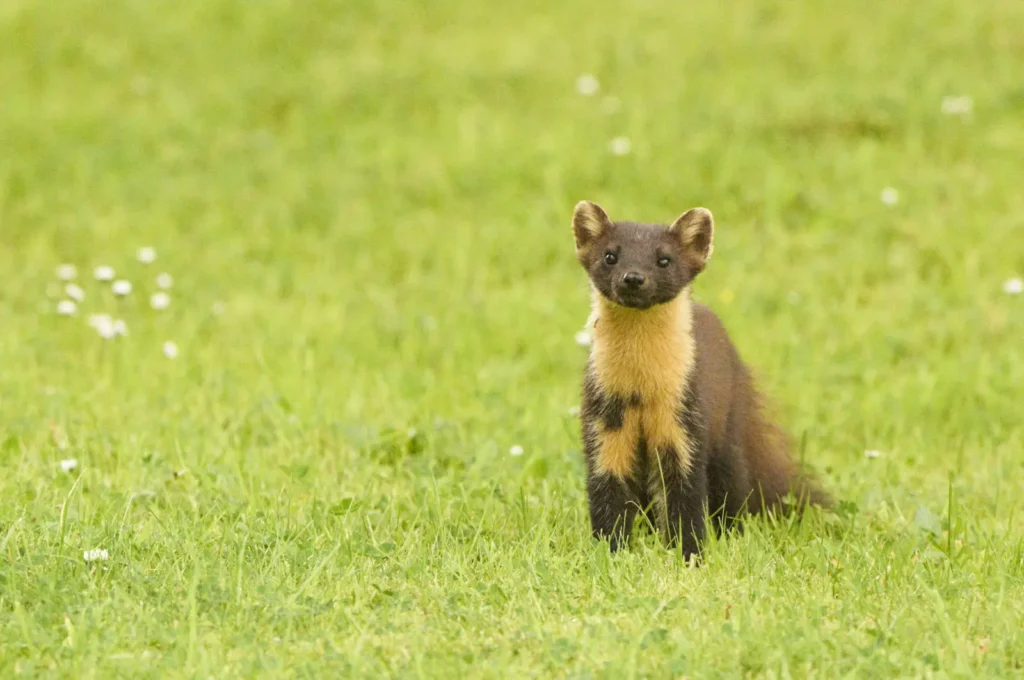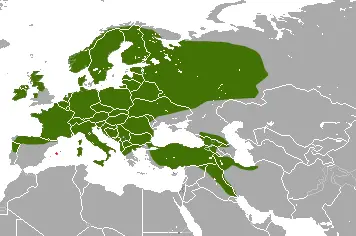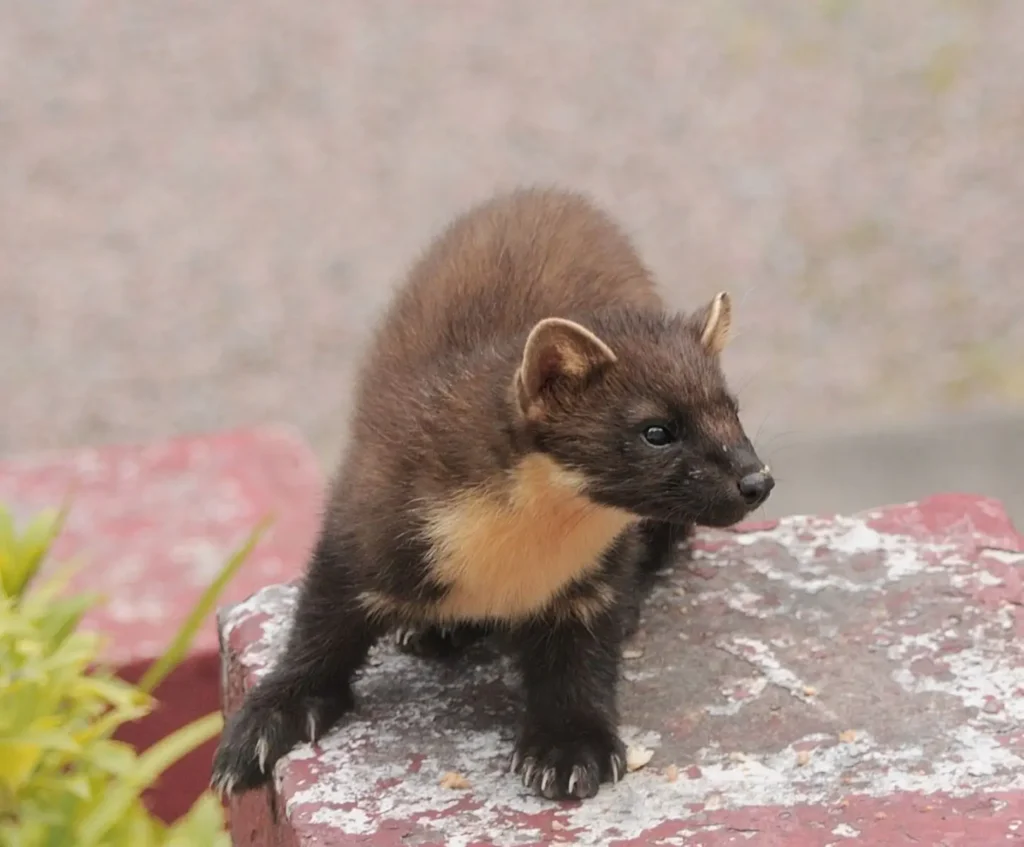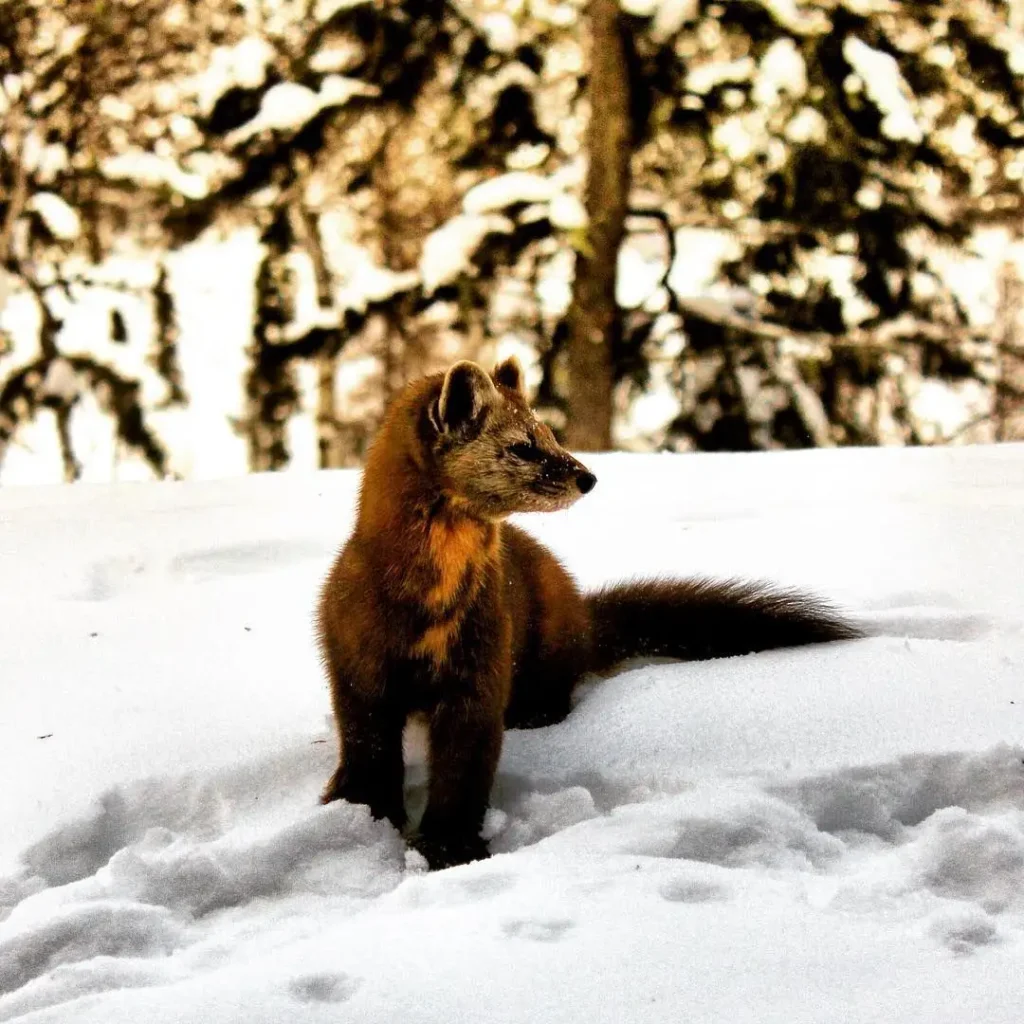Forest marten (Tuesday Tuesday) is a medium-sized predator of the marten family, known for its activity, agility, and ability to adapt to a variety of forest environments. This animal is a true representative of the forest landscape and has a unique role in maintaining the ecological balance, acting as a predator and seed sorter. The marten has gained popularity due to its elegant appearance and excellent hunting skills, and it is an integral part of the nature of many regions of Eurasia and North America.

Classification and scientific name
• The Kingdom: Animalia
• Type: Chordata
• Class: Mammalia
• Row: Carnivora
• Family.: Mustelidae
• Gender: Marten (Martes)
• View: Tuesday Tuesday
This animal species belongs to the marten family and is one of the largest representatives of the marten genus. Although its appearance resembles other predators of this family, such as the weasel or mink, the forest marten has its own specific features and habits.
Description of appearance
Dimensions and weight
• Body length: 45-60 cm
• Length of the tail: 20-30 cm
• Weight: 1.2-2.4 kg
• Height at the shoulders: 30-35 cm
The forest marten has a compact, muscular build that allows it to move easily through forest areas. Its body is covered with soft, dense fur, which is of various shades, mostly brown or gray, with characteristic yellow or white spots on the chest.
Characteristic features
- The forest marten has a long, flexible neck, which allows it to turn its head quickly and observe its surroundings.
- The ears are small, pointed with dark tips.
- There is a light or yellow spotting on the chest, which is one of the main characteristics of this species.

Range and habitat
🔵 Spread
The forest marten inhabits a wide range that covers Europe, parts of North Asia, and North America. Its habitat ranges from taiga forests to mixed and deciduous forests.
🔴 Living environment
- Forest martens prefer dense forests with plenty of shelter and food sources.
- It can be found at altitudes ranging from sea level to 1,500 meters, depending on the region, but it is most commonly found on the plains and in the mountains.
- The marten actively uses trees for hiding and hunting, so forest areas with rich vegetation are an ideal environment for its life.
Lifestyle and behavior
🌟 Social structure
The forest marten is a solitary animal that leads a territorial lifestyle. Each individual has a clearly defined territory that it protects from other martens. The structure of territories can vary depending on the density of the forest and the availability of food.
🌟 Activity time
- The forest marten is active during the night and morning, and during the day it usually rests in shelters among trees or bushes.
- It uses nights to hunt and search for food, which is the most efficient time for this predator species.
🌟 Behavior and adaptation
- The forest marten is a very agile and fast animal, capable of jumping high and climbing trees.
- It uses its extremely sharp claws to cling to trees and catch prey.

Food and hunting
🍖 Ration
The diet of the forest marten is very diverse and depends on the time of year and available resources. It mainly hunts small mammals, birds, insects, and can also eat fruits and berries.
✅ The main sources of food:
Mouse-like rodents, hares, voles, rabbits.
Birds, eggs, forest birds.
✔ Insect larvae, ants.
✔ Can sometimes eat fruits and berries.
🌟 Hunting methods
The woodland marten hunts with cunning and patience, following its prey in a tree or among bushes. It actively uses its sharp teeth and claws to capture prey and can be extremely effective at catching even fast mammals.

Reproduction and life cycle
❤️ Mating season: January-March
❤️ Pregnancy: 9-10 weeks
❤️ Number of kids: 1-5 cubs
❤️ Sexual maturity: 1-2 years
🧬 Life span
In the wild, the forest marten can live up to 10 years, but its average life expectancy is 4-6 years due to predators and the risk of collisions with people.
👶 Kids are born blind and helpless, and spend the first weeks of their lives in a burrow or other protected place. The mother feeds them with milk until they are 8-10 weeks old, after which they begin to hunt with her and adapt to independent living.
Natural enemies and threats
🔴 Predatory animals
The main natural enemies of the forest marten are large carnivorous mammals such as wolves, foxes, and jaguars. However, due to its ability to climb trees, the marten can escape from most terrestrial predators.
🔴 Threats from humans
✔ Loss of natural environment due to deforestation and urbanization.
✔ Poaching, hunting for fur.
✔ Threats from chemical contamination that can affect food chains.
Protected status and rescue efforts
🟢 Conservation status
The forest marten has a "Least Concern" status according to the International Union for Conservation of Nature (IUCN), but its population is threatened in some regions due to loss of habitat and hunting grounds.
🟢 Security measures
✔ It is protected in some national parks and nature reserves.
✔ Programs to restore the population and preserve forest ecosystems are actively implemented.
Conclusion
The forest marten is an elegant and agile predator that plays an important role in forest ecosystems. Its hunting of small mammals and birds helps maintain ecological balance and also contributes to pest control. Although the forest marten is not seriously endangered, efforts to protect its habitat are necessary to preserve this incredible animal in the wild.
